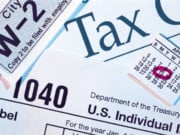1. What food products are covered by the FDA gluten-free labeling rule?
Covered:
- All FDA-regulated foods
- Dietary Supplements (vitamins, minerals, herbs, amino acids)
- Imported food products that are subject to FDA regulations
Not Covered:
- Meat, poultry and unshelled eggs (and any other products regulated by the USDA)
- Distilled spirits and wines that contain 7% or more alcohol by volume*
- Malted beverages made with malted barley or hops*
* These alcoholic beverages are regulated by the Alcohol and Tobacco Tax and Trade Bureau (TTB.) The FDA says it will work with the TTB to "harmonize" gluten-free labeling requirements between the two agencies.
2. After August 5, 2014, what food products may be labeled gluten-free?
A food product regulated by the FDA may be labeled gluten-free if:
1. It does NOT contain wheat, rye, barley or their crossbred hybrids like triticale (a gluten-containing grain) OR
2. It contains a gluten-containing grain or an ingredient derived from a gluten-containing grain that has been processed to less than 20 parts per million (ppm) of gluten.
3. May food products that are naturally gluten-free be labeled "gluten-free"?
Yes. Food products that are naturally gluten-free, like bottled spring water, or tomatoes may be labeled "gluten-free."
4. May oats be labeled gluten-free?
Oats that contain less than 20 ppm of gluten may be labeled "gluten-free." Oats do not need to be certified gluten-free.
5. Will there be a symbol to identify foods that meet the FDA definition of gluten-free?
No. The FDA has determined that consumers favor the label "gluten-free" to communicate that a food is free of gluten. Manufacturers are allowed to include a symbol as long as it is truthful and not misleading.
6. Are manufacturers required to test for gluten to label a product "gluten-free"?
No. Manufacturers are not required to test for the presence of gluten in ingredients or in the finished "gluten-free" labeled food product. However, they are responsible for ensuring that the food product meets all labeling requirements. Manufacturers will need to determine how they will ensure this.
7. How will the FDA enforce gluten-free labeling requirements after August 5, 2014?
The FDA may perform food label reviews, follow-up on consumer and industry complaints, and analyze food samples. Consumers and manufacturers may report a complaint to an FDA Consumer Complaint Coordinator in the state where the food was purchased. Click Here for a list of FDA Consumer Complaint Coordinators.
8. Why did the FDA adopt < 20 ppm of gluten as the standard instead of zero ppm? Why does CDF support this?
The FDA adopted the standard based upon the recommendations of the scientific and medical communities, and because there are no analytical methods available that are scientifically validated to reliably detect gluten below 20 ppm. The CDF Medical Advisory Board supports the < 20 ppm of gluten standard for gluten-free labeling. According to Dr. Peter Green, director of the Celiac Disease Center at Columbia University, "The 20 ppm is a scientifically determined level of gluten that has been shown to be tolerated by those with celiac disease. It is in line with standards in other countries."
Dr. Alessio Fasano, of the Center for Celiac Research states, "Twenty parts per million, or 20 parts of gluten per one million parts of food sample, is an accepted standard in many parts of the world for products that are labeled gluten-free. The evidence-based research published by our Center, which has been confirmed by studies from colleagues around the world, conclusively supports the 20 ppm level as a suitable safety threshold for gluten-free products." According to the Center's website, "research from the Center has shown that 10 milligrams per day of gluten consumption is a safe level for the vast majority of individuals with celiac disease." The Center's website goes on to state that 10 milligrams is roughly the equivalent of one-eighth of a teaspoon of flour, or 18 slices of bread with each slice containing 20 ppm of gluten.
9. Does the FDA rule gluten-free labeling rule apply to foods served in restaurants?
No. The FDA suggests that restaurants and other retail food service establishments use the same definition for gluten-free.
10. What are the FDA and CDF doing about gluten-containing ingredients in medications?
The FDA's Center for Drug Research and Evaluation (CDER) is reviewing the public comments it has received regarding options to limit gluten exposure from consumption of drug products.
CDF is asking the public to support the HR 2003: Gluten in Medicine Disclosure Act of 2013 sponsored by Representatives Tim Ryan (D-OH) and Nita Lowey (D-NY) which requires drug labels to contain a parenthetical statement identifying the source of any ingredient constituting or derived from a grain or starch.
Article & Photo Credit: Celiac Disease Foundation






Let Us Know What You Think